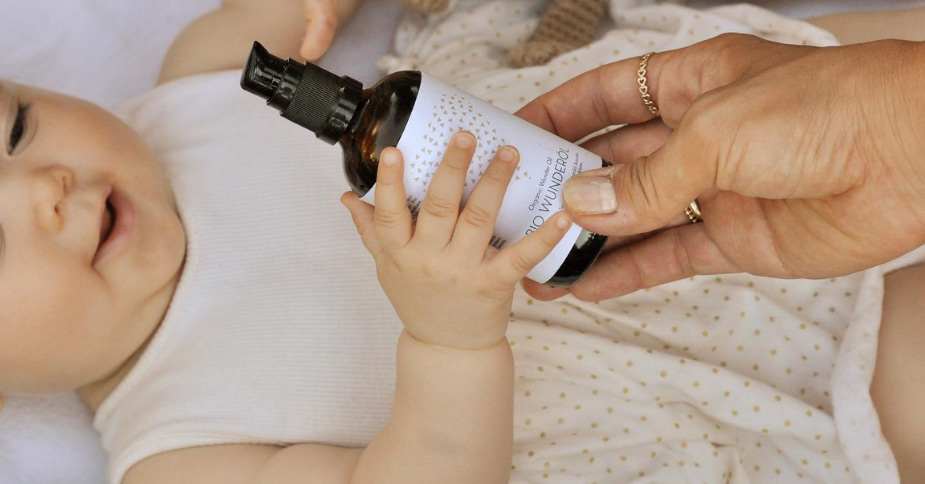
There is nothing better than the smell of a newborn baby! You want to keep that scent and that cool, baby-soft skin for as long as possible. So after the bath and while changing nappies, you lovingly apply special baby creams and oils. And then your little one suddenly develops eczema or skin irritations. How is that possible? What went wrong? What is good baby care and what should you pay attention to if you want to care for your baby as naturally as possible? We've put it all together for you.
Baby skin is 5 times thinner than that of adults
As babies' skin is much thinner than ours, it is more susceptible to infections and irritations. The skin absorbs harmful substances more easily and dries out more quickly due to synthetic substances in creams. Hard water can also affect the pH of your baby's skin and dry it out.

In the womb, the baby's skin is still protected by skin oils or vernix caseosa. Once outside mummy's womb, your baby has to do it himself. But in the first weeks, a baby's protective skin barrier is not yet fully developed.
It is therefore extra important to use good, natural baby skin care products that protect, care for and strengthen the skin.
Read the label of your products!
We already do it much more than we used to, but again, the golden rule is to read the ingredients list on the baby oil or cream label carefully. Whatever is listed first is also present in the product in larger quantities.
Don't be put off by long lists of Latin names. These are international terms (INCI or International Nomenclature Cosmetic Ingredient) for active ingredients, perfumes and preservatives. Above all, look out for substances such as SLS or SLES, PEGs or paraffins.
Alcohol and preservatives also belong to the list of undesirable ingredients and are not recommended in baby creams or oils.
Some good substances that really add value to the skin:

- Aloe vera contains as many as 160 essential vitamins that work in synergy to create properties that support and strengthen the skin.
- Coconut oil is rich in omega 3 and omega 6 fatty acids. It contains vitamins and trace elements with antimicrobial and moisturising properties that heal and nourish the skin.
- Shea butter, mango butter and coconut butter have ultra-hydrating properties such as unsaturated fatty acids and numerous vitamins and minerals that make the skin smooth and soft.
- Sesame oil, avocado oil and almond oil are powerful natural oils that contribute to skin revitalisation
- Jojoba oil nourishes the skin, regulates the moisture balance of the skin and makes it supple and smooth. It helps to strengthen the skin's natural protective properties against cold, sun and heat.
Check whether the product is certified
In addition to the list of ingredients, you may also find a number of logos on the packaging of your product which show that the product is organic or certified by an independent body. This means that the product has been critically evaluated and you can assume it is a good quality product.
- Ecocert is a French certification organisation in the field of natural cosmetics and one of the best known. Since 2002, it has also inspected natural ingredients and the ecological quality of cosmetic products.
- Natural Cosmetics Standard (NCS) is one of the strictest certification companies. Among other things, they determine the quality of the ingredients of natural cosmetics.
- Cosmebio is a French quality mark with guidelines that cosmetics must satisfy to be allowed to call themselves natural cosmetics. They also pay attention to environmentally friendly production.
- NaTrue is the international association for natural cosmetics. Diese Organisation mit Sitz in Brüssel setzt sich für die Anerkennung und Förderung von Natur- und Biokosmetik ein. Sie möchten wissen, ob Ihr Shampoo, Duschgel usw. natürlich und biologisch ist? Achten Sie auf das Natrue-Logo auf der Verpackung.
 Dermatologically tested?
Dermatologically tested?
Sometimes products are also subjected to a test by dermatologists before they are put on the market (dermatest). This is especially good if you have sensitive skin or with small children, whose skin is fragile anyway.
In any case, it is still advisable to first test the product on a small spot on your arm, for example. Wait for two days and if your skin does not react badly to it, you can apply the cream or oil all over your body or face.
Some tips for using baby oil
Have you found a natural, organic baby oil? Good news: you can use such an oil for much more than just a baby massage. So keep the bottle at hand on the changing table!
As washing gel in the bath
It is best not to put your baby in the bath too much or too long, because water dries out the skin. Especially in the first weeks after birth, when your little one's skin barrier is not quite finished.
It is ideal to rub your baby in with baby oil before the bath. You can combine this with a small gentle massage, but that is not necessary. In the water, the oil forms a protective layer on the skin that reduces the drying effect of water. The water thus drips off your baby's skin.

Natural oil has a cleansing and moisturising effect. So when you get your little one out of the bath, their skin is cared for in one go. There is no need to apply body lotion or cream again.
A clean and moisturised face
While you snuggle your baby up in soft clothes, your little one's face is constantly exposed to weather and wind.
A mild baby oil is a great cleanser for baby's fragile skin. Put a few drops of baby oil on a cotton pad and apply to the face, except around the eyes and mouth. If you want, you can use a damp cloth or flannel afterwards. Thanks to the oil, your baby will not have a tight feeling on the face.
Clean and protect the bottom with oil
Want a gentle way to clean your child's nappy area? First wipe off the stool with a damp cloth or flannel, then clean all the folds with a cotton pad with baby oil. This has an extra cleansing effect and protects the skin from bacteria and irritation.
Want to prevent red bums? Wipe the stool away. Rub the buttocks with oil and go over it again with a damp flannel. Pat dry with a towel and leave to dry before changing. If your baby's bottom is irritated, you can apply a layer of zinc ointment or special baby cream.
Loosening crusts with oil
Milk scabs are a build-up of dead skin cells on the scalp of babies. These 'scales' can be quite stubborn to get rid of. Treat them with gentleness. Apply baby oil to your little one's head. Let it soak in for half an hour and then wash the head with water. With a comb you can then gently comb out some scabs. Repeat regularly.
Infants sometimes have scabs behind their ears as well. Take a cotton pad with a few drops of baby oil and rub it gently behind the ears to remove crusts and accumulated dirt.
Massage!
 How wonderful it is to pamper your little one with a real massage? Rest assured, a baby massage is very different from an adult massage. If your child is less than 6 weeks old, it is best to just rub him gently and lovingly with some mild baby oil. By touching, your child experiences security and the feeling that it is allowed to be there.
How wonderful it is to pamper your little one with a real massage? Rest assured, a baby massage is very different from an adult massage. If your child is less than 6 weeks old, it is best to just rub him gently and lovingly with some mild baby oil. By touching, your child experiences security and the feeling that it is allowed to be there.
From 6 weeks onwards, you can really start massaging. The Shantala babymassage is a technique from India in which you massage your little one with full attention and gentle caresses and in which you get to know each other better and learn to feel intuitively.
It is best to massage your baby at a time when he or she is not yet hungry and does not have a full stomach. In the beginning, you may have to search for your ideal moment.
Make sure the surroundings are quiet and warm (23°C) and put your phone on silent. Keep baby oil and a towel handy to wrap your baby in after the massage. It is important that you give your full attention to your little one during the massage.
After the massage you can wrap your darling in a towel and cuddle for a while. Or you can let your little one relax in a bath or bath bucket. Enjoy!





 Dermatologically tested?
Dermatologically tested?



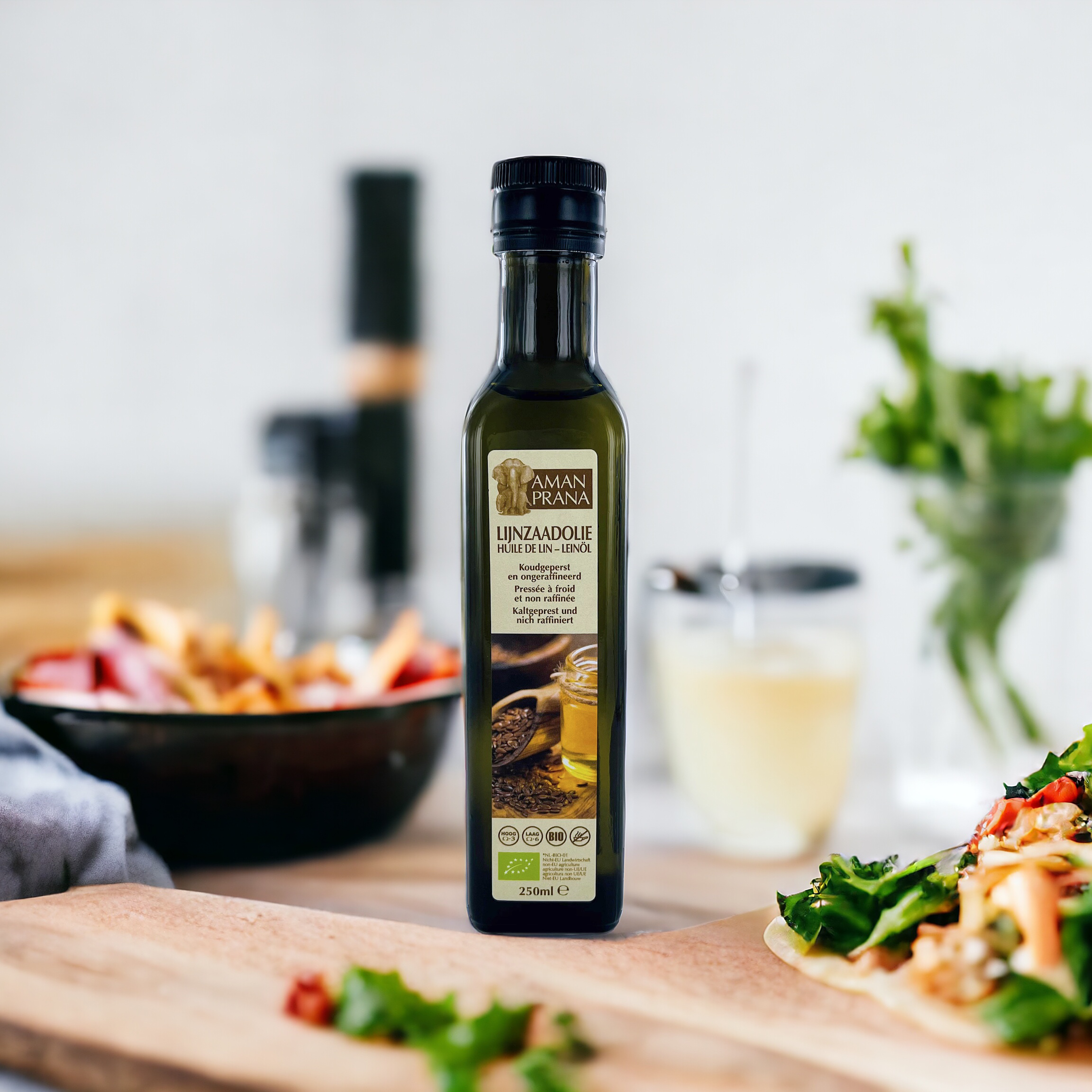
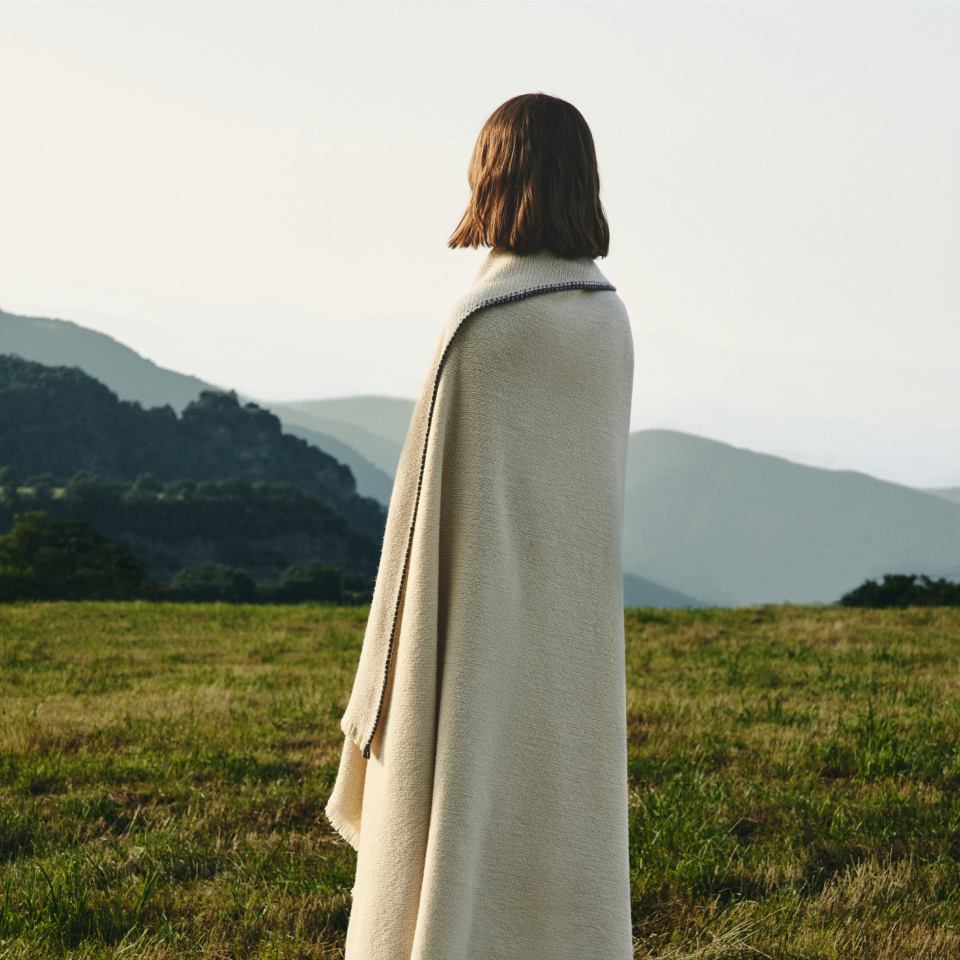
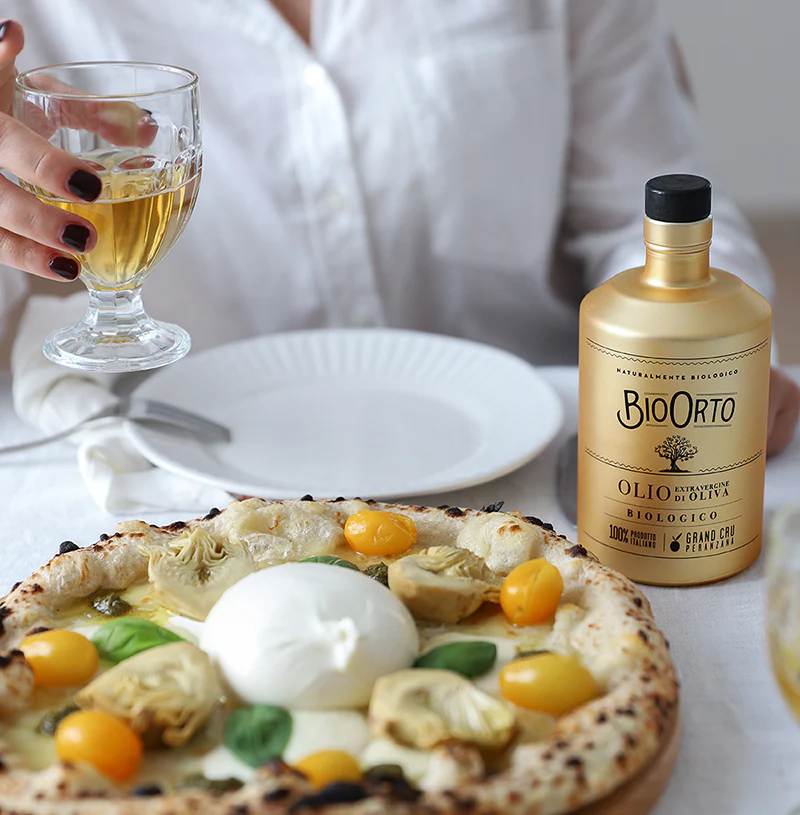
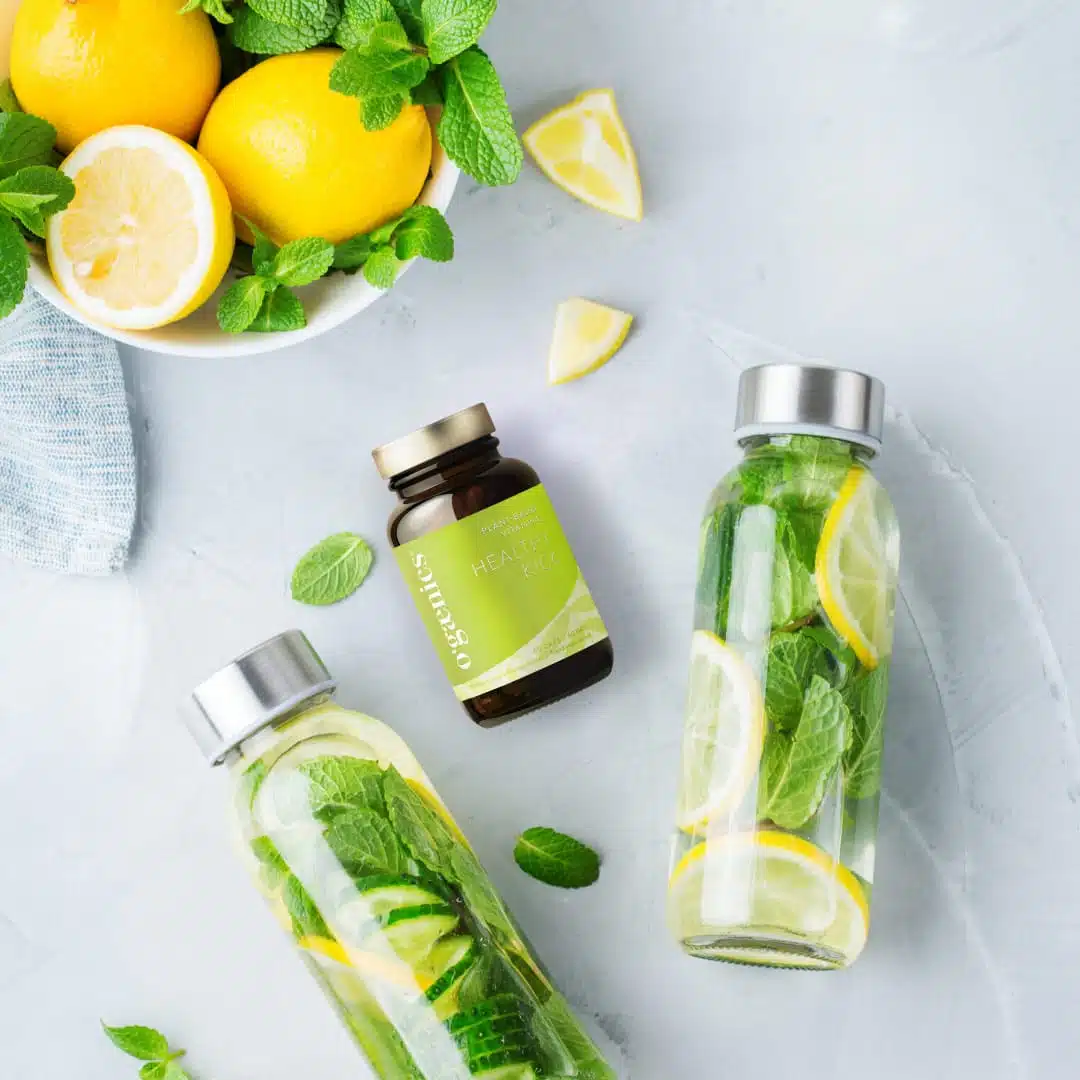
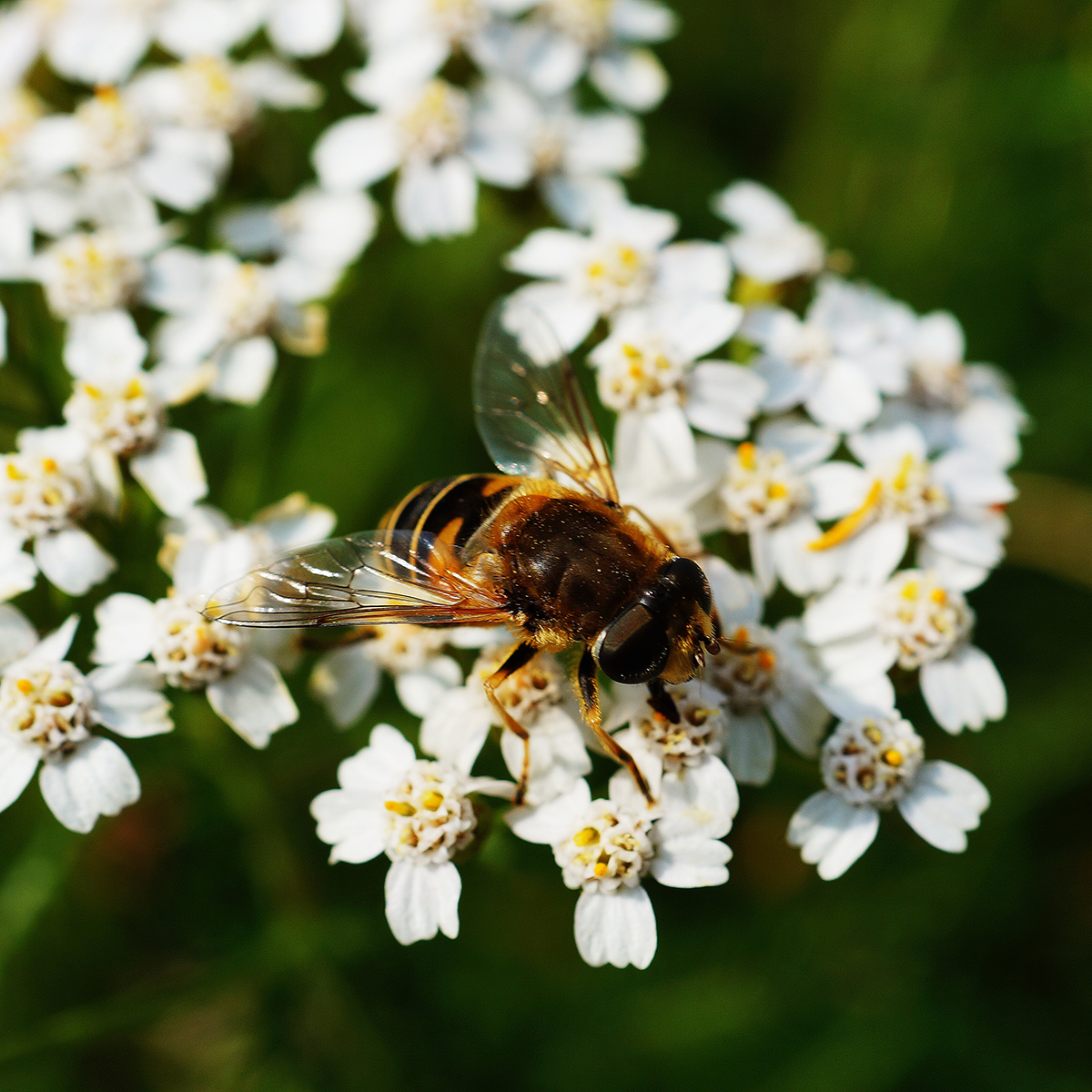
The information below is required for social login
Sign In
Create New Account